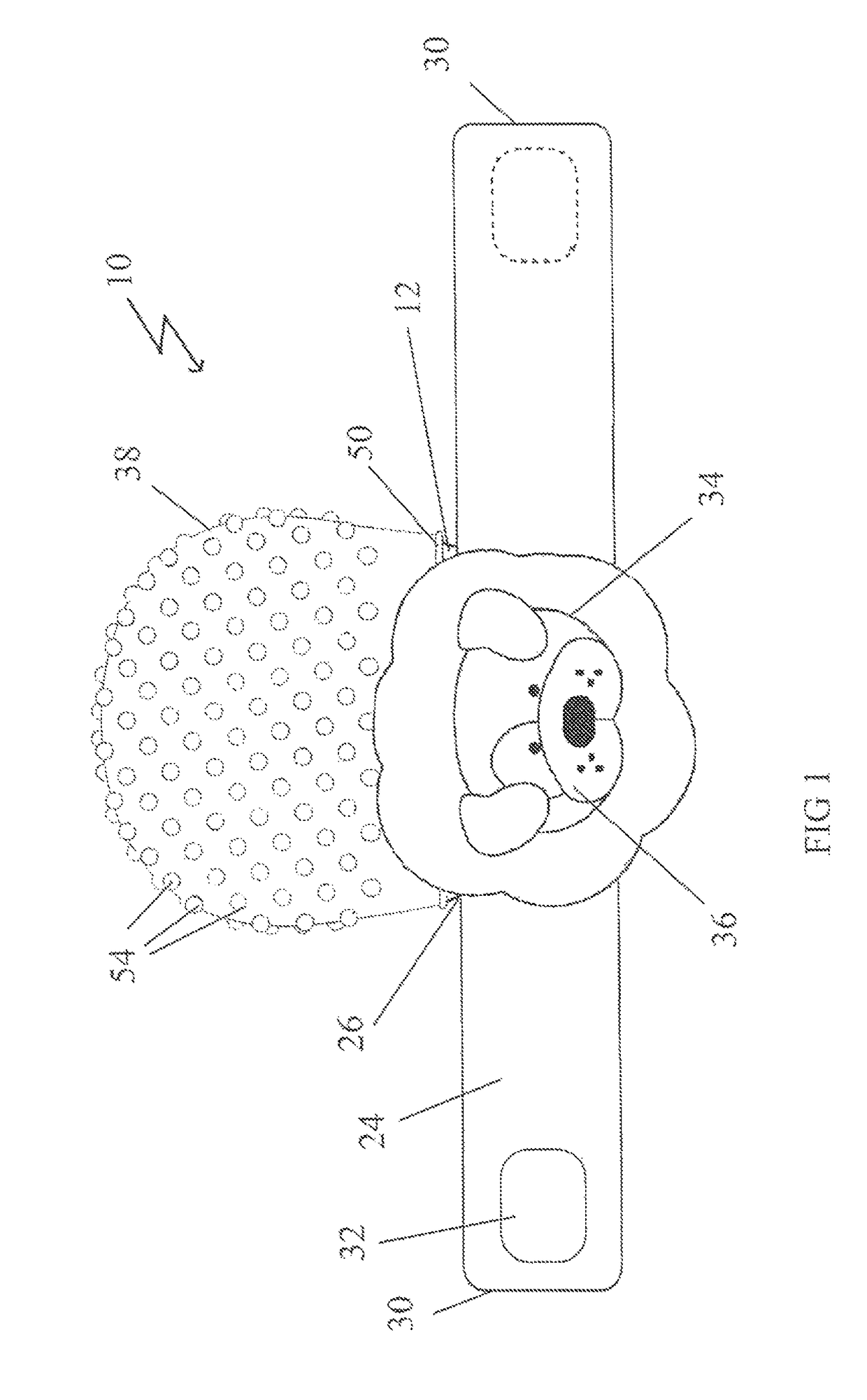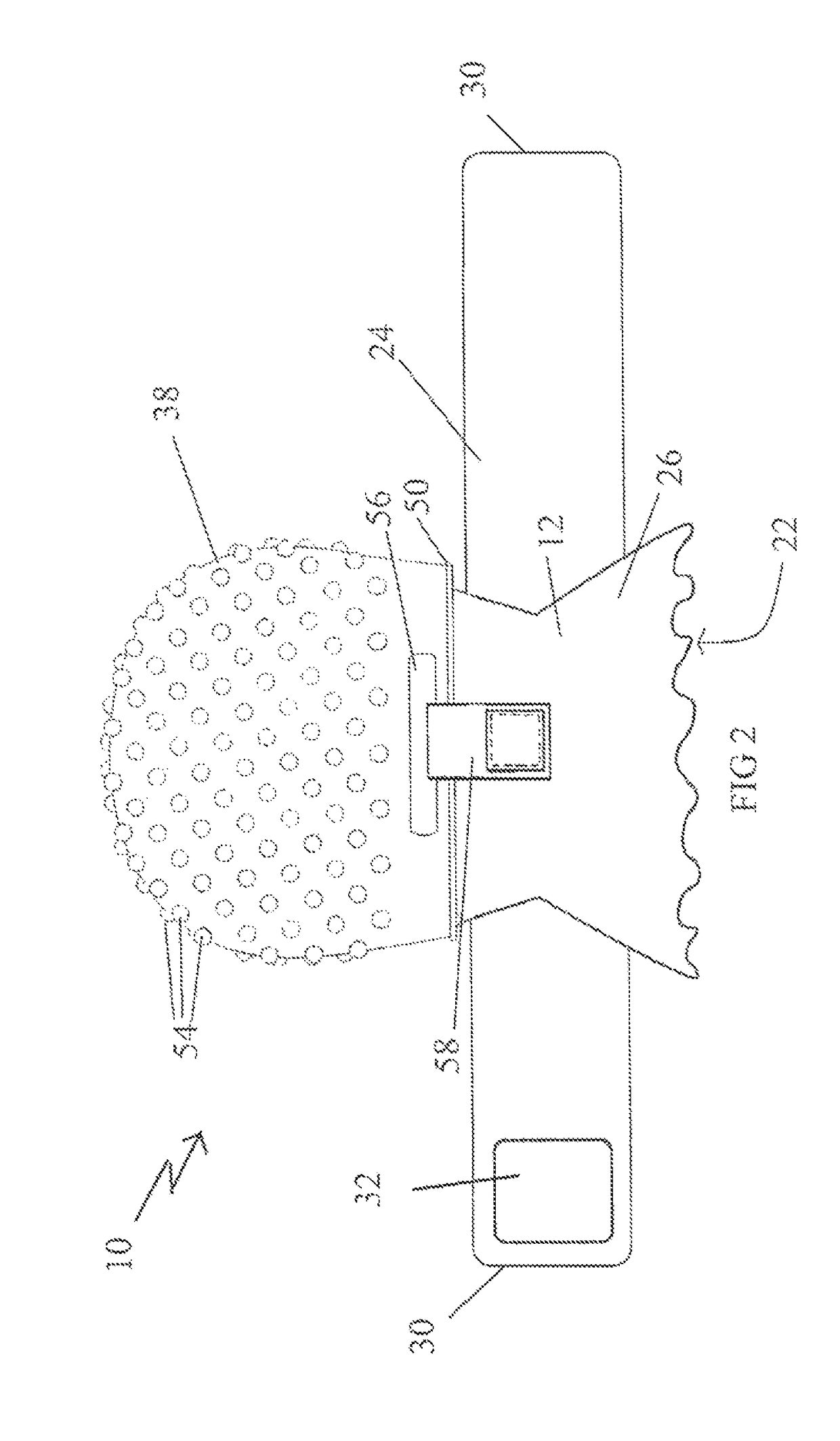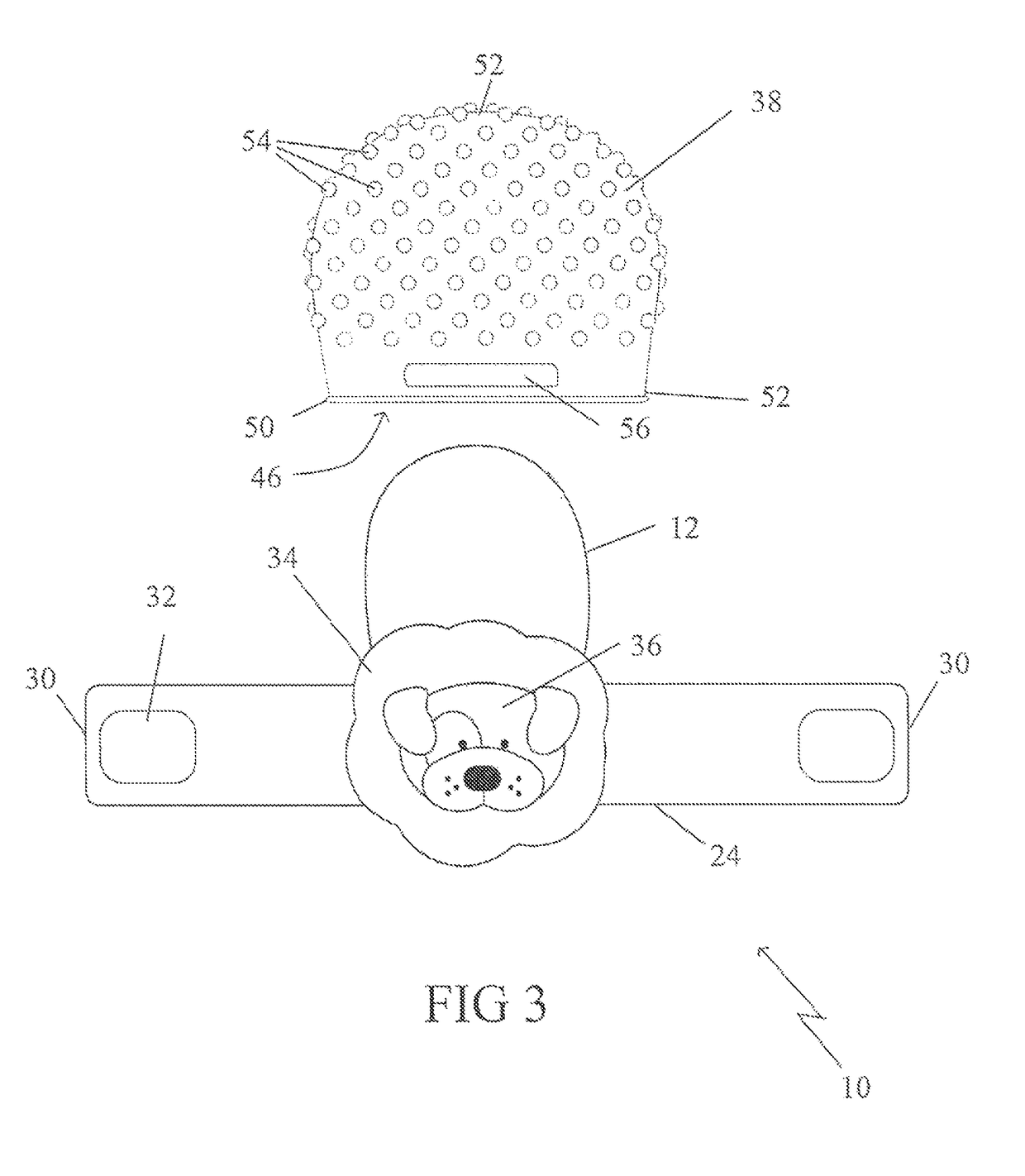Two-stage teething mitten
a technology of teething rings and mittens, applied in the field of two-stage teething rings for infants, can solve the problems of teething rings easily breaking or damaged, redness, swelling, etc., and achieve the effect of relieving pain and stress of teething
- Summary
- Abstract
- Description
- Claims
- Application Information
AI Technical Summary
Benefits of technology
Problems solved by technology
Method used
Image
Examples
first embodiment
[0044]the teething mitten 10 is intended to be used with infants in two stages. In the first stage, the teething mitten 10 can be used without the sleeve 38, as illustrated in FIG. 3. The pocket 12 of the teething mitten 10 is fitted over an infant's hand 20 by sliding the infant's hand 20 through the opening 22 in the pocket 12 as shown in FIG. 4. The elongate strap 24 is then wrapped around the infant's wrist 28 and the mating tape 32 at the opposed ends 30 is mated to maintain the pocket 12 in place on the infant's hand 20. While wearing the teething mitten 10 on which a toy 34 is provided, the toy 34 serves as a visual stimulant to attract and engage the attention of the infant.
[0045]As the infant matures and progresses to the teething stage, the second stage of the teething mitten 10 can be utilized. In the second stage, the detachable sleeve 38 is fitted over the fabric pocket 12 and secured in position by inserting the tabs 58 through the apertures 56 in the sleeve 38. With t...
second embodiment
[0046]FIG. 12 shows the teething mitten, designated 10A. In this embodiment, the teething member comprises one or more textured portions 60 which are permanently affixed to pocket 12A. Affixation may be through any suitable non-toxic method to provide a safe and effective teething surface, such as sewing, heat bonding, use of food safe adhesive or a combination of these methods. As with the detachable sleeve, textured portions 60 are substantially or partially covered in textures, such as teething bumps 54, or other textures and patterns of raised protrusions that may be used to facilitate teething. It will be appreciated that a combination of different textures and patterns of raised bumps could also be used for the textured portions 60, as well as different colours and opacities. Also as with the detachable sleeve 38, textured portions 60 are preferably fabricated from food or medical grade silicon or a similar material that is safe, hygienic and sufficiently flexible to be comfor...
third embodiment
[0048]FIGS. 13-17 show the teething mitten, designated 10B. In this embodiment, the teething member comprises a teether 62 which is preferably substantially or partially textured with, for example, teething bumps 54, or other textures and patterns of raised protrusions that may be used to facilitate teething. The properties and possibilities described with reference to the other teething members are also applicable to the teether 62, including being made of a material that is sale, hygienic and sufficiently resilient that it will not disintegrate under repeated chewing and teething efforts, and being provided in a variety of patterns, colours, opacities and other properties that may appeal to infants. Teether 62 is preferably separable from strap 24 and toy 34, but may be permanently attached to one or both of strap 24 and toy 34. Teether 62 may be directly attachable to strap 24 and / or toy 34, or may be held in place by a connection between the strap 24 and toy 34, such as by snaps...
PUM
 Login to View More
Login to View More Abstract
Description
Claims
Application Information
 Login to View More
Login to View More - R&D
- Intellectual Property
- Life Sciences
- Materials
- Tech Scout
- Unparalleled Data Quality
- Higher Quality Content
- 60% Fewer Hallucinations
Browse by: Latest US Patents, China's latest patents, Technical Efficacy Thesaurus, Application Domain, Technology Topic, Popular Technical Reports.
© 2025 PatSnap. All rights reserved.Legal|Privacy policy|Modern Slavery Act Transparency Statement|Sitemap|About US| Contact US: help@patsnap.com



